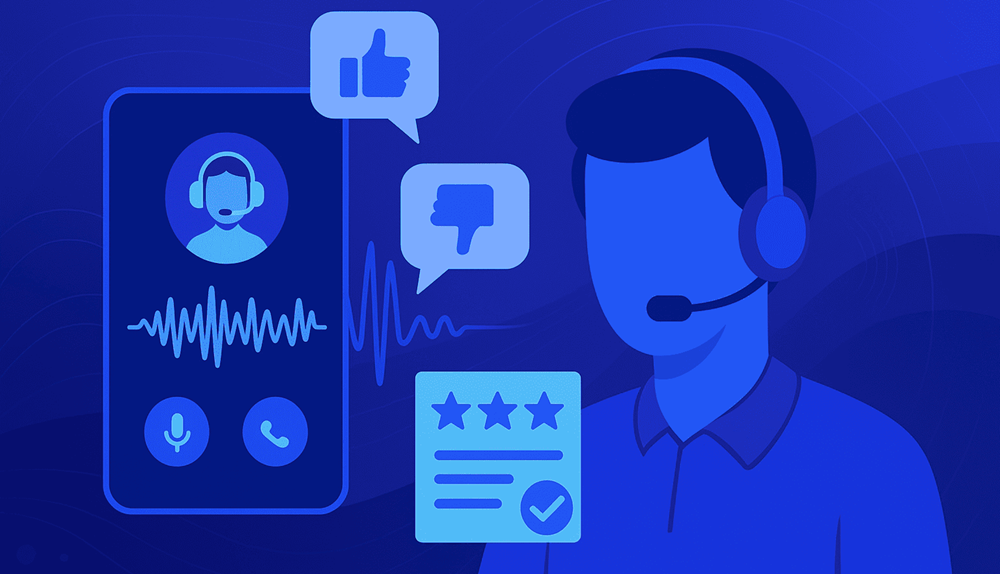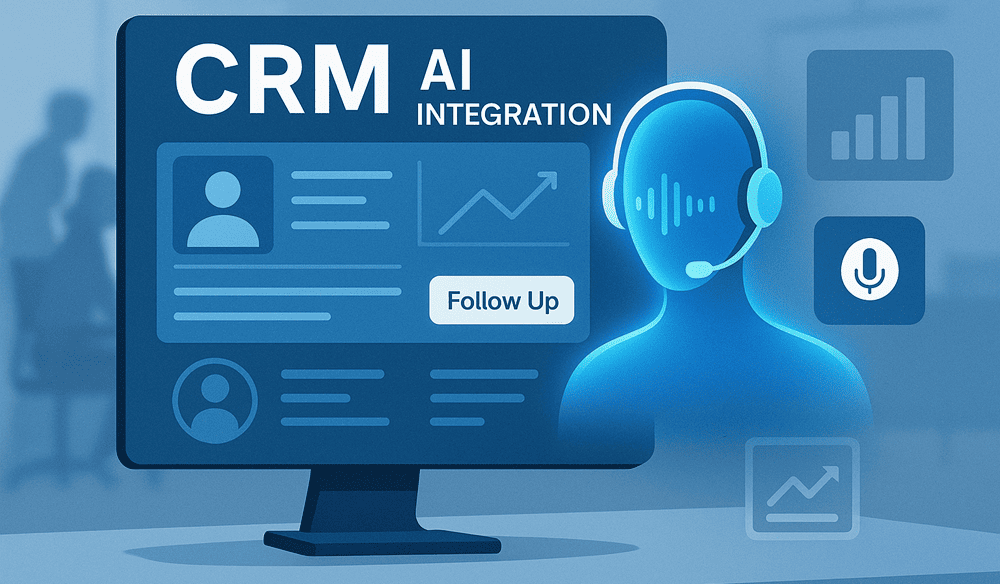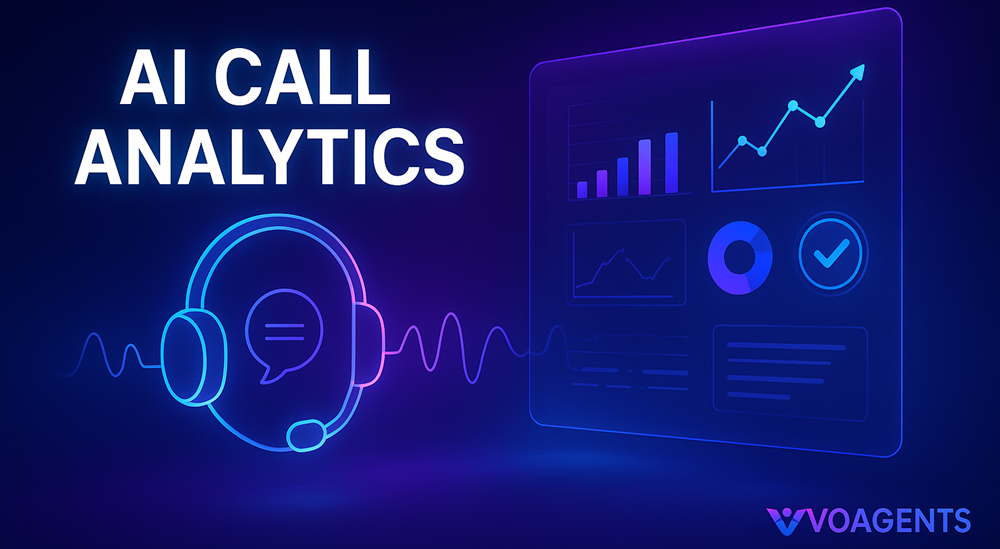When your business phone rings, it’s more than just a call — it’s a data point. Every customer conversation contains insights that can shape sales strategies, improve service quality, and boost revenue. The challenge? Most of that information vanishes once the call ends. That’s where AI call analytics changes the game.
What Is AI Call Analytics?
AI call analytics is the process of recording, transcribing, and analyzing voice interactions to uncover patterns and actionable insights. It’s powered by advanced speech recognition and natural language processing that can understand context, tone, and intent — not just words.
Instead of relying on manual notes or subjective impressions, your team gets structured, accurate data from every inbound or outbound call.
Why Call Analytics Matters Now More Than Ever
According to a recent industry report, voice interactions are still the preferred support and sales channel for complex inquiries, even in the age of chatbots. Businesses that fail to analyze these conversations risk missing:
- Trends in customer pain points
- Sales objections and triggers
- Compliance risks
- Cross-sell and upsell opportunities
For companies that already use an ai voice assistant, integrating analytics ensures these tools not only handle calls but also learn and improve over time.
Core Benefits of AI Call Analytics

Let’s break down why more businesses are adding AI call analytics to their voice AI agent integration strategy.
1. Better Lead Qualification
AI listens for key phrases, sentiment, and intent markers to score leads automatically. Instead of guessing who’s ready to buy, your team works the hottest prospects first.
2. Enhanced Customer Experience
By analyzing tone and word choice, AI can detect frustration or confusion early. This allows for immediate intervention and improves customer ai assistant performance.
3. Agent Performance Tracking
Whether human or AI, call handlers get measurable KPIs — average talk time, resolution rate, sentiment scores — to keep quality high.
4. Data-Driven Decision Making
AI transforms raw conversations into dashboards and reports that highlight trends, bottlenecks, and high-impact actions.
How AI Turns Calls into Actionable Data
Here’s what a typical AI call analytics workflow looks like:
| Step | What Happens | Result |
| Call Capture | AI records inbound and outbound calls | Full, accurate call library |
| Transcription | Speech converted into searchable text | Easy keyword and topic search |
| Sentiment Analysis | Tone, pace, and emotion detected | Mood-based insights |
| Intent Detection | AI identifies purpose of the call | Faster routing and follow-ups |
| Reporting | Data visualized in dashboards | Quick decision-making |
AI Call Analytics in Action: Practical Use Cases
Sales Optimization
In sales environments, analytics identify common deal-breakers and closing triggers. Combined with ai appointment scheduling, you can route ready-to-buy leads directly to booking systems.
Customer Support
Pairing analytics with a call routing assistant ensures urgent or high-value cases are prioritized instantly.
Quality Assurance
Instead of random call monitoring, managers can review flagged interactions where AI detected negative sentiment or compliance risks.
How It Integrates with Your Current AI Stack

One of the biggest advantages of AI call analytics is how smoothly it works alongside existing tools. For example:
- Your ai voice assistant can feed its call transcripts into the analytics engine for pattern recognition.
- Voice ai agent vs chatbot insights help decide when a call should switch to live agents.
- Using ai voice agent integration, analytics can pass customer insights directly into your CRM, keeping records fresh and actionable.
Industry Examples
- E-commerce: A retailer used AI analytics to discover that shipping delays were the top cause of cart abandonment calls. Adjusting logistics cut call volume by 15% and increased conversion rates.
- Financial Services: A bank identified that 22% of inbound calls were for password resets. Adding self-service options reduced call handling time and freed agents for higher-value interactions.
- Healthcare: Clinics using AI analytics noticed recurring queries about appointment slots, leading them to adopt ai appointment scheduling tools that reduced no-shows by 30%.
Best Practices for Implementing AI Call Analytics
- Start with Clear Goals — Decide if your priority is sales, support, or compliance.
- Train on Your Data — Customize AI models with your industry’s vocabulary for higher accuracy.
- Integrate with CRM & Helpdesk — Maximize value by linking insights to existing workflows.
- Review Regularly — Use analytics not just for reporting but for continuous improvement.
- Respect Privacy Regulations — Ensure call recording and analysis comply with local laws.
Overcoming Common Myths
“AI call analytics is only for big companies.”
Not true. Cloud-based solutions are affordable and scale from startups to enterprise.
“It replaces human judgment.”
It’s a decision-support tool AI handles repetitive analysis, humans make final calls.
“Setup is too complex.”
With modern integrations, most teams can be up and running in days.
The ROI of AI Call Analytics
The financial impact can be significant. Businesses often see:
- Higher conversion rates from better lead prioritization
- Reduced call handling costs through automation
- Improved customer satisfaction scores with proactive service
- Better agent retention due to clearer performance feedback
For companies already using tools like an ai voice assistant or ai voice agent, adding analytics is the next logical step in maximizing investment.
Final Thoughts
In a competitive market, every call is an opportunity but only if you can capture and use the insights inside it. AI call analytics doesn’t just collect data; it turns conversations into action, helping teams sell smarter, serve better, and grow faster.
If your business is ready to stop guessing and start knowing, integrating AI call analytics could be the single most impactful upgrade you make this year.




